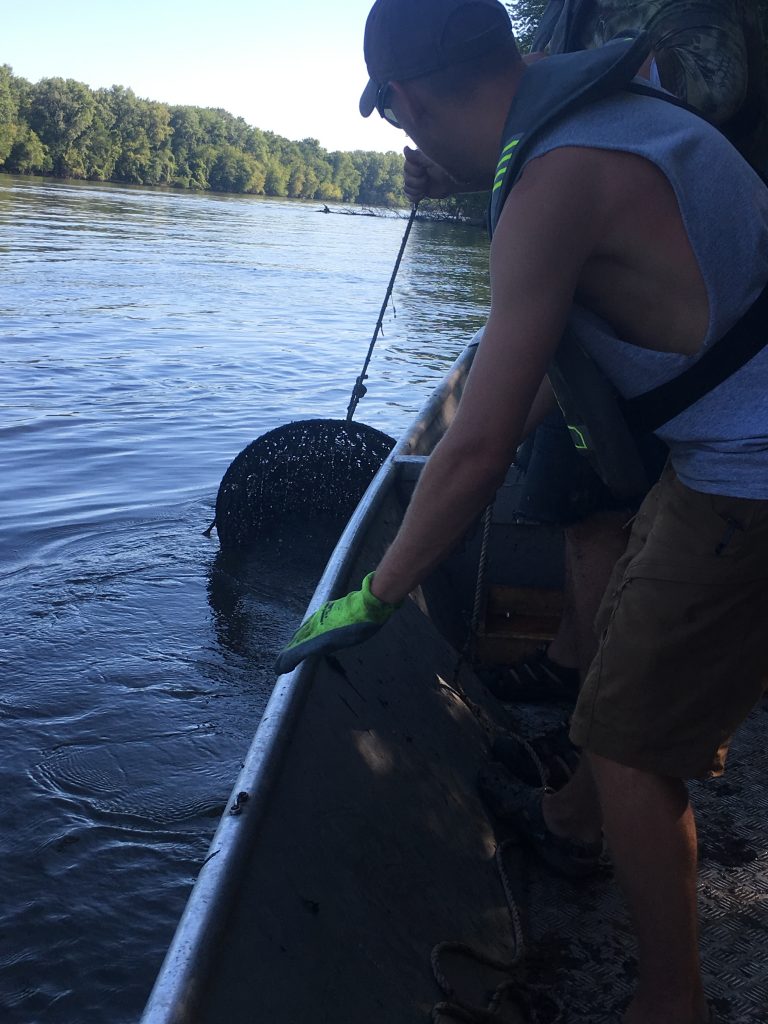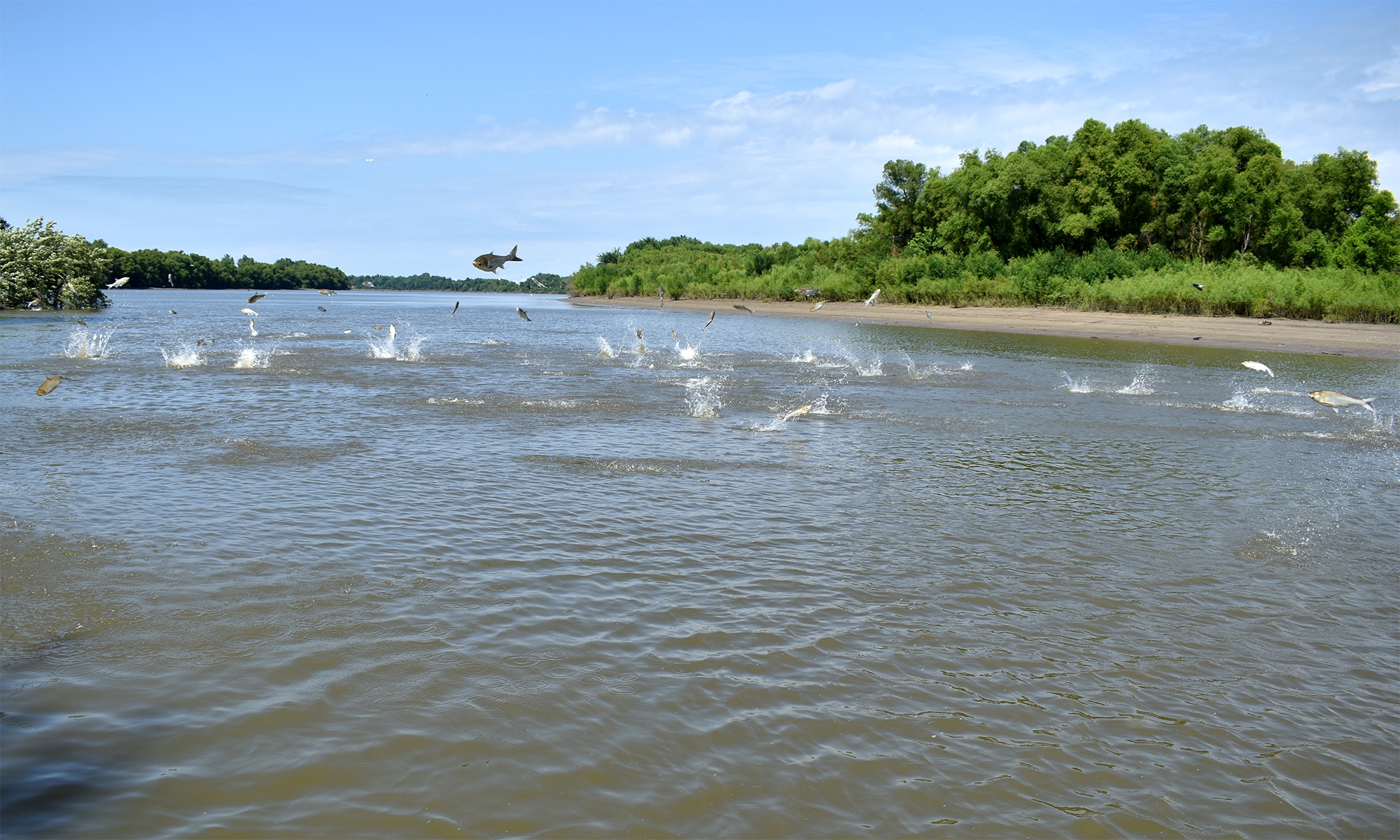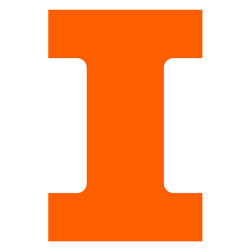Enhanced Detection of Black Carp in the lower Illinois River
Exotic black carp Mylopharyngodon piceus, a large bodied fish that feeds on mussels, have invaded the Illinois River system and have been recently captured in the Alton, La Grange, and Peoria Reaches of the lower Illinois River. With only a few captured individuals, little is known regarding population levels in invaded reaches. Since more robust population estimates are essential to management and control of this potentially harmful invader, we will be assessing the population of black carp in the lower Illinois River and efficacy of different baits used to collect them. Hoop nets baited with clam-based and cottonseed-based baits have collected black carp in the past, but have never been experimentally tested against a control to assess their efficacy. This direct comparison between baits, along with LTRM standardized hoop netting that uses soybean-based bait, will help us gain knowledge regarding black carp population levels, range expansion, life-history information, and insight regarding bait efficacy. Additionally, all by-catch will be identified, measured, weighed, and enumerated for a complete assessment of bait efficacy.

Funding is provided by the Illinois Department of Natural Resources through the Great Lakes Restoration Initiative.
This project is coordinated by Sam Schaick and Jesse Williams at IRBS.

